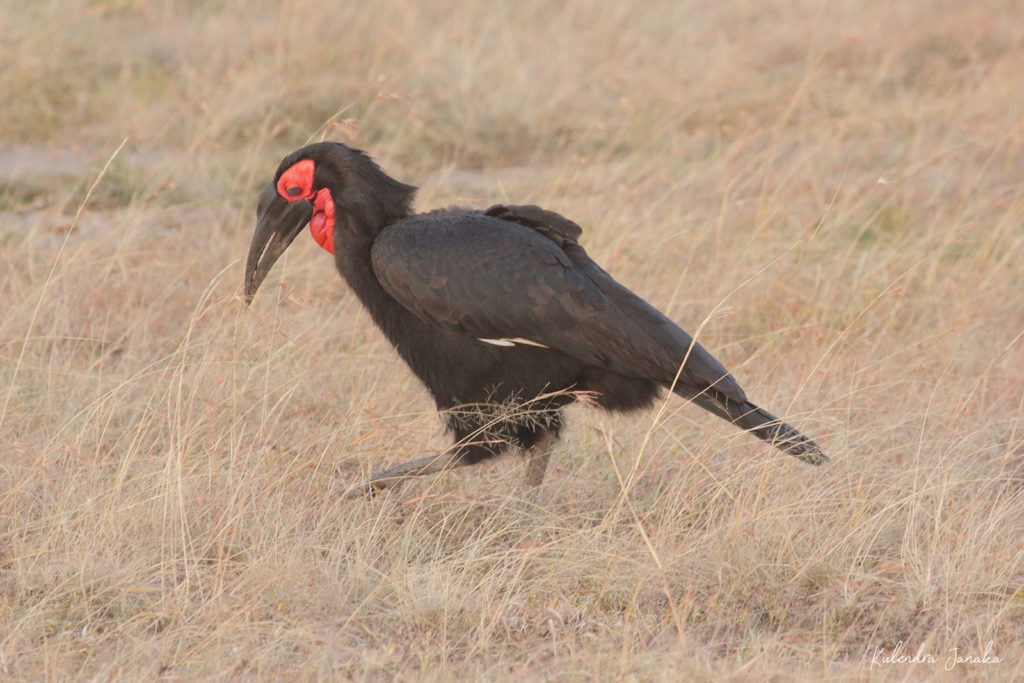Magical Kenya – Part 4: Birds of Masai Mara
Masai Mara is so big and diverse that you can never finish talking about it in just one post. So here comes the rest. And this post is going to be exclusively on birds.
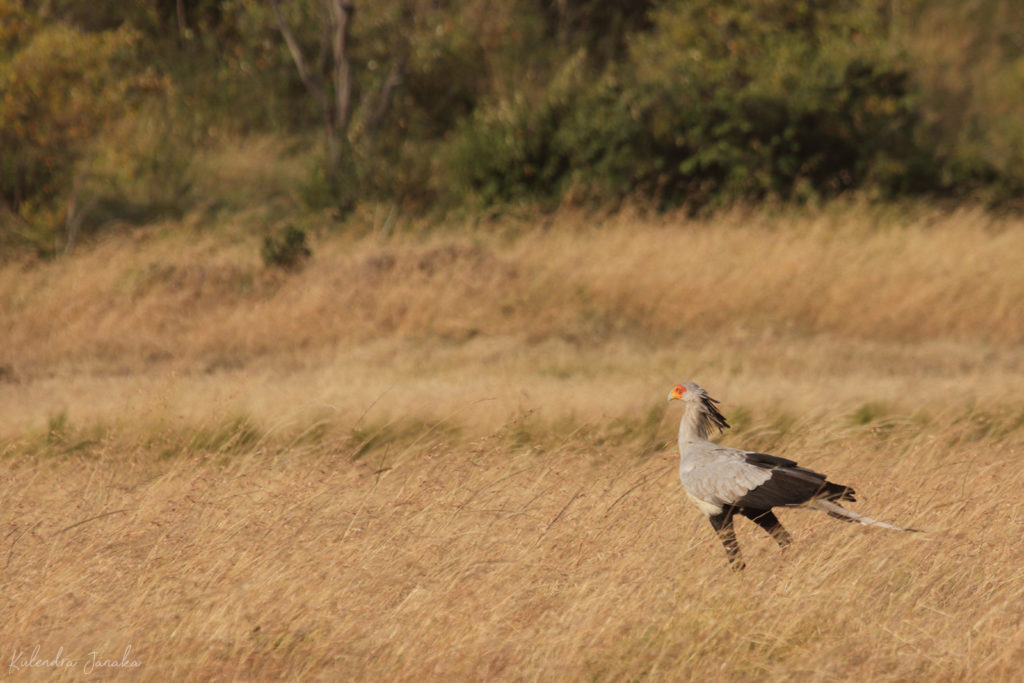
The Secratarybird (Sagittarius serpentarius) is a bird categorised in the Vulnerable state by the IUCN. 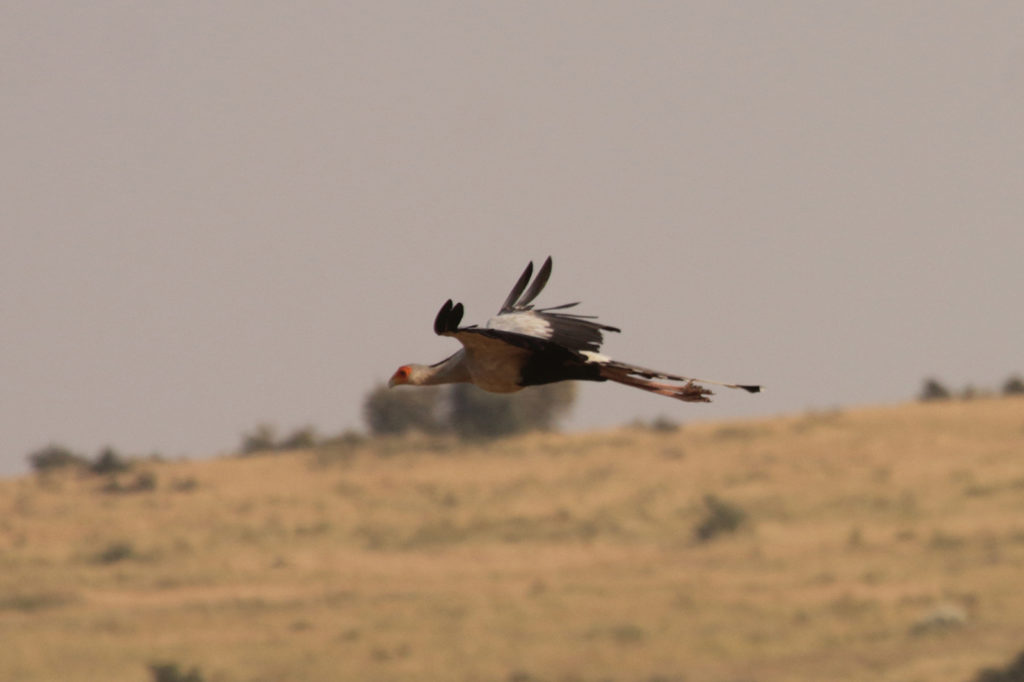
On the second day of the safari itself, I saw a bird that I had previously only seen in a video game. The Secretary Bird (Sagittarius serpentarius) is a very interesting bird. Birds of prey such as eagles and owls make use of flying to spot their prey on the ground and then attack from above. Secretary Bird stands among them as a minority player where it hunts predominantly while walking. In this, it is closer to Herons rather than the Hawks, Eagles and Vultures it is related to. The Secretary Bird also has a very interesting method of killing its prey. Unlike almost all other birds of prey which use their beaks to either cut through or crush the prey, the Secretary Bird stomps on the prey till it dies or falls unconscious. So how did I first come across the bird? Playing a PC game called Zoo Tycoon. The game which allows you to become a zoo keeper and build a successful zoo, had a challenge which included captive breeding a Secretary Bird pair. Almost 10-11 years after I first learned about this bird, I actually managed to see it with my own eyes in its natural habitat.
If you have ever seen birds mate, you would’ve noticed that it is quite a quick affair. A large number of birds, nearly 97%, deposit sperm through what is called the cloaca. The cloaca is an organ that acts as a common orifice for the reproductive, digestive and urinary tracts. This organ is present in amphibians, birds and reptiles. In placental mammals, the cloaca is present during the very early stages of the embryo but separates in to digestive and urinary tracts separately. In mammalian females, this further subdivides in to a vagina and urethra. Animals with a cloaca, do not have an external penis almost all the time. So how do these animals reproduce? They touch their cloacas together during mating which allows the sperm from the male cloaca to move in to the female cloaca. Hence the term, cloacal kiss. Out of the 3% birds who don’t follow the cloacal kiss method, the biggest bird is the Ostrich, followed by the Emu. So how do they reproduce? They actually have a penis!
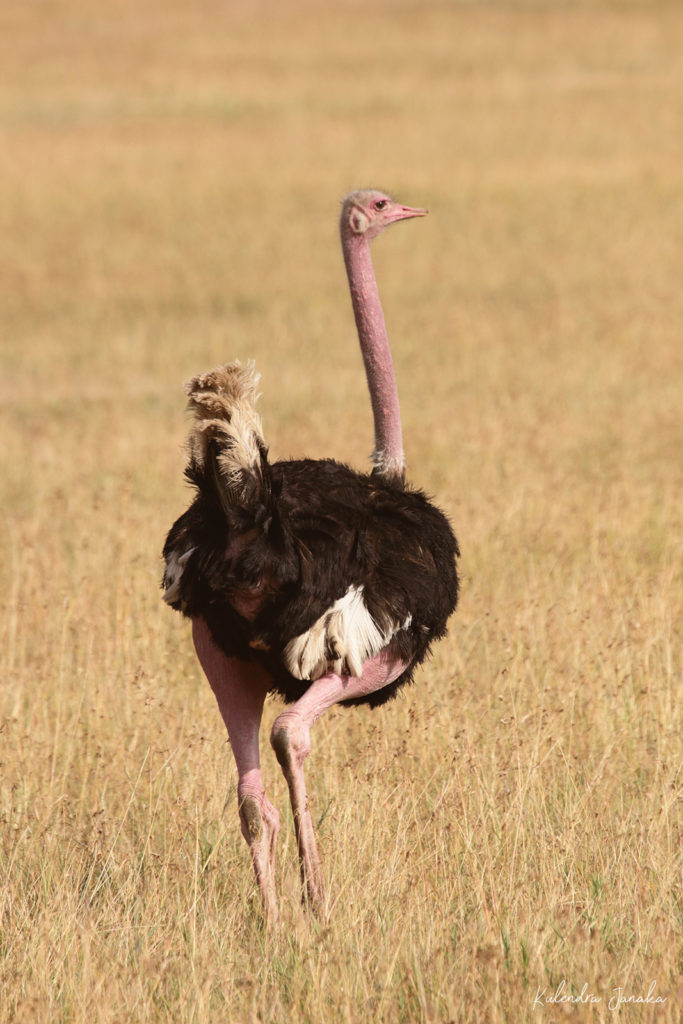
Male Masai Ostrich (Struthio camelus massaicus) 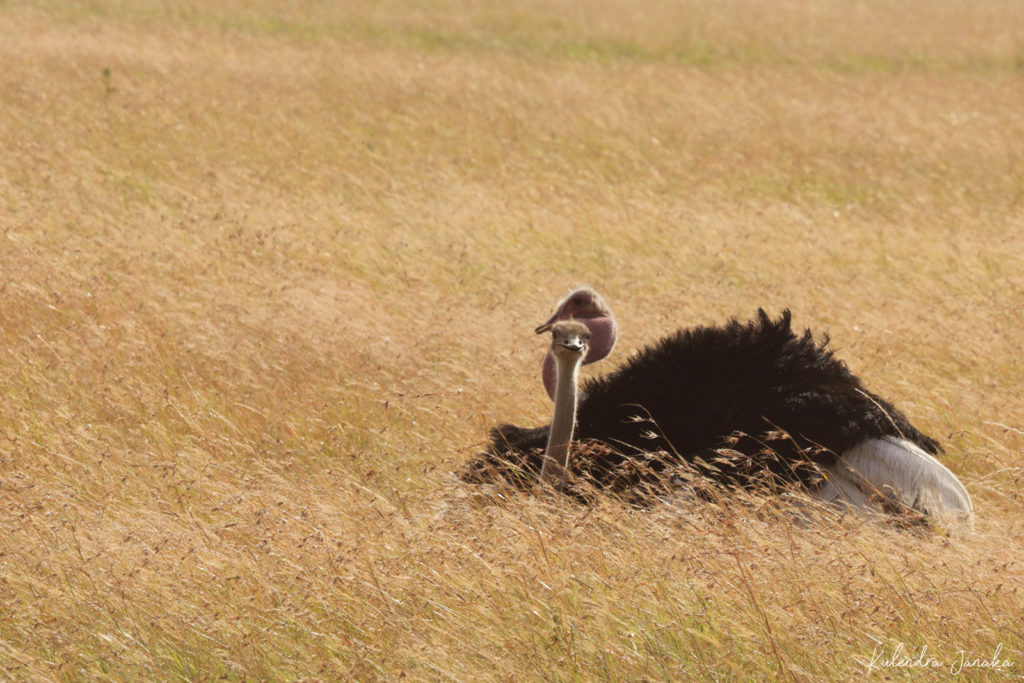
The male Ostrich does a dance before they mate. If the female obliges, she sits down allowing him to mount. 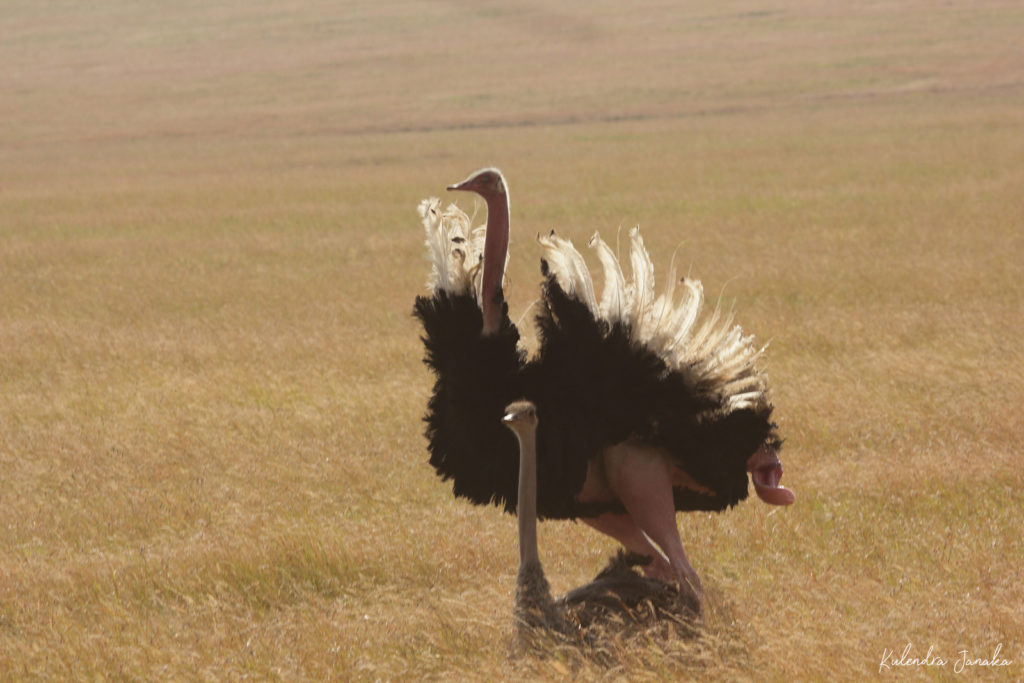
The male Ostrich are one of the few birds who still have a penis. 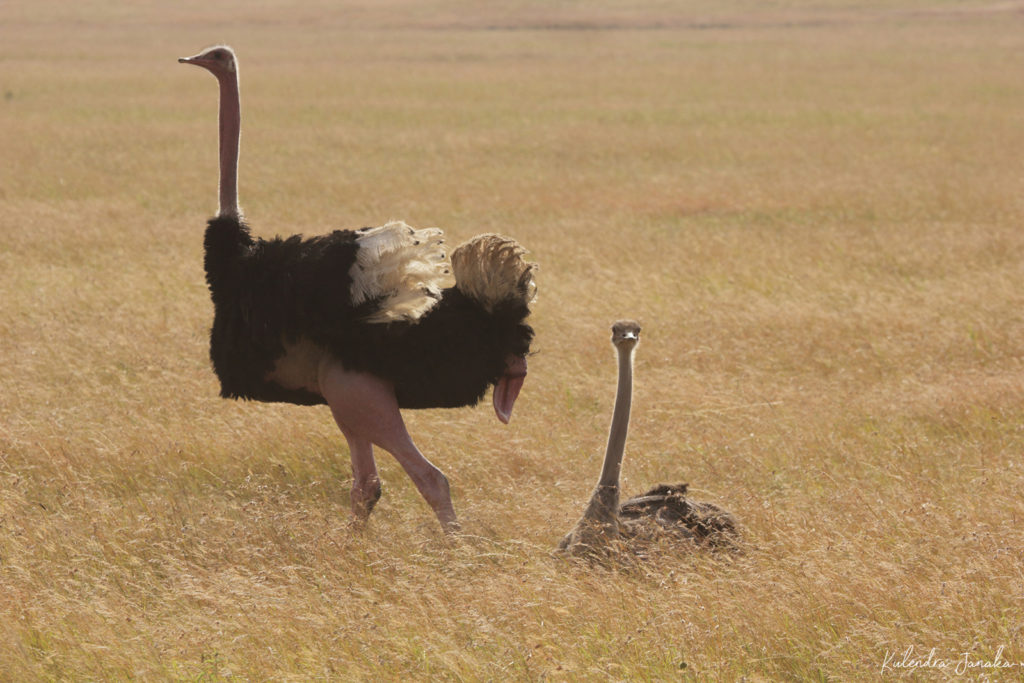
During our third day in Masai Mara, we saw a female Ostrich that seemed to be alone. Our guide however spotted two males, trying to approach her from very far. Soon, one of the males, the larger one managed to chase off the other. After a short courtship display, the female sat down and the male mounted it. At that point I did not know that the Ostriches had penises. What came next was a big surprise for me!
One other bird that I met during my safari was also a “blast from the past”. Long time ago, I think possibly via discovery channel, I learned of the Ground Hornbill, which was listed as one of the ugliest birds you could find. In a subsequent visit to the Kruger Park in South Africa, I was hoping to see one but did not get the chance. This time around though I was luckier. The Southern Ground Hornbill (Bucorvus leadbeateri) is the largest species of Hornbills. The Southern Ground Hornbills differ from the others in more ways; they are almost completely carnivorous whereas the others subsist on fruits as well and they spend most of the time on ground hunting for food. They are also one of the longest living birds where one in captivity lived for about 70 years. The Southern Ground Hornbills practice something called “helpers at the nest”, a practice where juvenile and mature birds still stay with the parents to help breed and take care of subsequent broods. A practice that is humans can relate very much to.

The Superb Starling (Lamprotornis superbus) is probably the most aptly named bird. 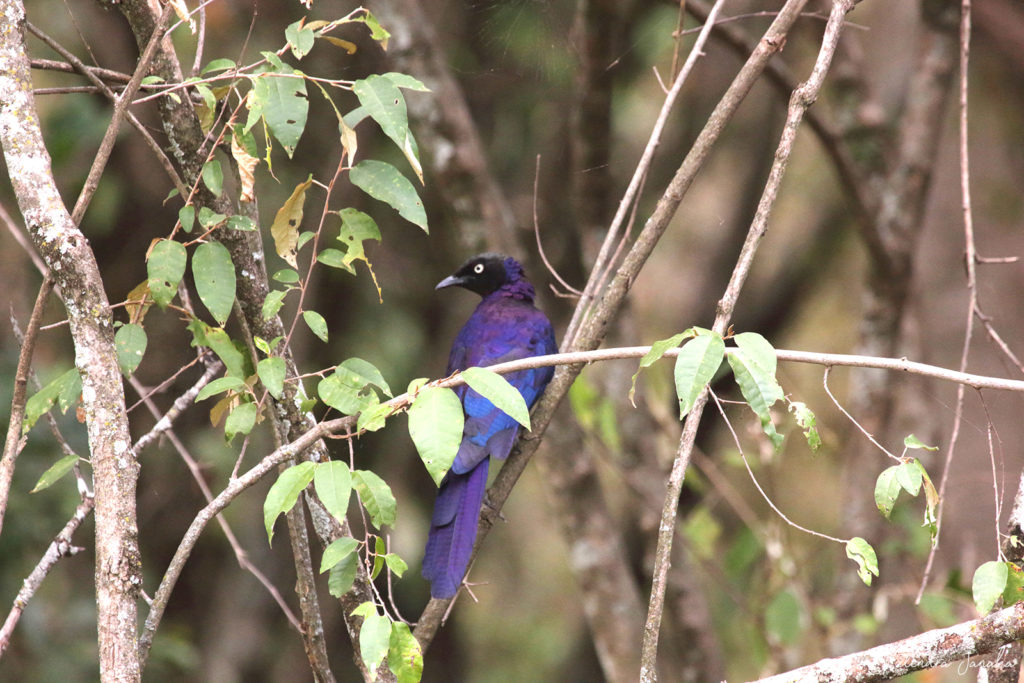
Ruppell’s Starling (Lamprotornis purpuroptera) 
Orange River Francolin (Scleroptila gutturalis)
During my safari I was also able spot two species of Starlings, the Superb Starling (Lamprotornis superbus) and the Ruppell’s Starling (Lamprotornis purpuroptera). But my best shot was of an Orange River Francolin (Scleroptila gutturalis). We also spotted two hawks or eagles, which unfortunately I could not photograph properly.
Kenya is a birder’s paradise with over 1100+ bird species in the country. Being a tropical country, it is a good time to go birding virtually any time of the year. But the period from September to April is an even better time because birds from the northern hemisphere migrate to Kenya during their winter season. My biggest concern was however hearing that the pollution at Lake Nakuru was causing the birds to no longer come there. I hope Kenya soon solves that problem.
